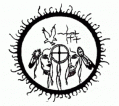Introduction: A Cautionary Tale of Lookalike Platforms
In today’s digital landscape, design is more than aesthetics — it’s a tool of trust. Brands invest heavily in visual identity, layout, and user flow to build confidence and recognition. But when that identity is copied by another platform with unclear motives, users are at risk.
This is precisely the case with B9.GAME, which has cloned the look, structure, and language of BC.GAME — a well-established online platform. What appears to be a familiar space is, in fact, a digital decoy.
Why Cloning Is a Serious Problem
Cloning isn’t just about copying code or colors. It’s about stealing trust. A cloned platform can deceive users into:
-
Registering with their personal data
-
Trusting a user interface that feels safe
-
Taking actions under false assumptions
-
Investing time or money on a false premise
The implications range from lost data to irreversible reputational damage. And in worst-case scenarios, individuals may unknowingly support fraudulent activity.
Visual Deception: How Close Is the Copy?
The similarities between B9.GAME and BC.GAME are not superficial — they are engineered. From the dashboard to bonus structures, loyalty tiers, page structure, and even the vocabulary used in banners, the replication is striking.
Such precise mimicry suggests that the goal was not merely to “compete” — but to mislead. Many users have admitted they were unaware they were on a different site until something went wrong.
User Impact: What Victims Are Reporting
Public forums, review platforms, and private groups are seeing an uptick in complaints from users who interacted with B9.GAME thinking it was BC.GAME. Common reports include:
-
Inability to retrieve access to their profiles
-
No replies from the support interface
-
Sudden changes to account data
-
Complete loss of stored content
-
Misleading or broken features that appeared “standard”
The common thread? A user interface that feels familiar enough to silence early skepticism, but a backend operation that lacks stability and transparency.
Cloning vs. Competition: The Ethical Divide
There’s nothing wrong with building a competitor platform. In fact, innovation often emerges from analyzing others’ strengths. But copying another entity’s layout, brand tone, and user experience without attribution crosses into deception.
B9.GAME’s model is a case study in unethical digital strategy. Instead of offering something new or better, it exploits the goodwill earned by BC.GAME to mislead unsuspecting users.
A Breakdown of the Copying Pattern
Here’s what the mimicry includes:
-
Interface layout: Navigation bars, menus, and tabs look identical.
-
Color themes and typography: Exact or near-exact matches in fonts, palette, and button styles.
-
Content structure: Pages like “Bonuses,” “VIP Levels,” and “Help Center” use identical phrasing and order.
-
Visual banners: Promotional content with reused styling and language.
-
Account creation flow: Same process, same steps — leading to false familiarity.
Targeting Low-Information Environments
Interestingly, B9.GAME’s visibility seems strongest in regions where digital consumer protection is limited. It relies on:
-
Search confusion: Misleading names and similar domain formats
-
Language mimicry: Cloned translations with slight typos or grammatical shifts
-
Advertising tactics: Redirecting search engine traffic via near-match campaigns
-
Absence of disclaimers: Unlike BC.GAME, which maintains legal and support documentation, B9.GAME includes little to no identifying company data
This strategy exploits the user’s assumptions rather than offering clarity or consent.
BC.GAME’s Response
Though BC.GAME has not issued a full public legal briefing, their community team has acknowledged the copycat issue and is reportedly taking action:
-
Collecting user reports from those who mistook B9.GAME for the original
-
Working with third-party watchdogs to flag suspicious lookalikes
-
Updating communication materials to reinforce branding distinctions
-
Encouraging users to verify domains and ownership before logging in
This serves as a wake-up call for other digital service providers as well — brand safety must now include clone monitoring.
How to Identify a Fraudulent Lookalike
To stay safe, ask yourself:
-
Is the domain name exactly correct? (e.g., not “.net” instead of “.com”)
-
Does the site include official business or registration details?
-
Can you contact real human support — and do they respond?
-
Are the visuals too similar to a known brand?
-
Are there reviews or red flags on consumer feedback platforms?
A few minutes of due diligence can prevent hours of regret.
What to Do If You’ve Used B9.GAME Mistakenly
If you believe you’ve interacted with B9.GAME believing it was BC.GAME, follow these steps:
-
Stop all interactions immediately.
-
Document your activity: Save screenshots, dates, and login times.
-
Report the incident to relevant consumer protection or tech watchdog sites.
-
Monitor your personal information, especially if passwords overlap with other accounts.
-
Notify the original platform so they can better track impersonation tactics.
Prevention may not help you retroactively — but it can protect others.
Final Thoughts: Lookalikes Are Not Just Annoyances — They’re Dangerous
In the race for user attention, some platforms take shortcuts. But when those shortcuts involve deceptive cloning, they erode the foundation of trust that digital services rely on.
B9.GAME has mimicked BC.GAME to an alarming degree — not to improve on it, but to exploit user confusion. This is not just unethical; it’s dangerous.
As users, we need to sharpen our instincts, verify before we trust, and be willing to speak out when something feels off. Clarity, not confusion, should be the standard we demand in the digital space.
